#gustav myer
Text
BLOGTOBER 10/6/2022 - GOLEMANIA! PT 1: DER GOLEM - HOW HE CAME INTO THE WORLD
For Blogtober 10/6 and 10/7, I examined two films about Jewish mysticism, both made by non-Jews, both long unavailable (or simply not available enough), and both fine examples of the style and visual capabilities of their times.
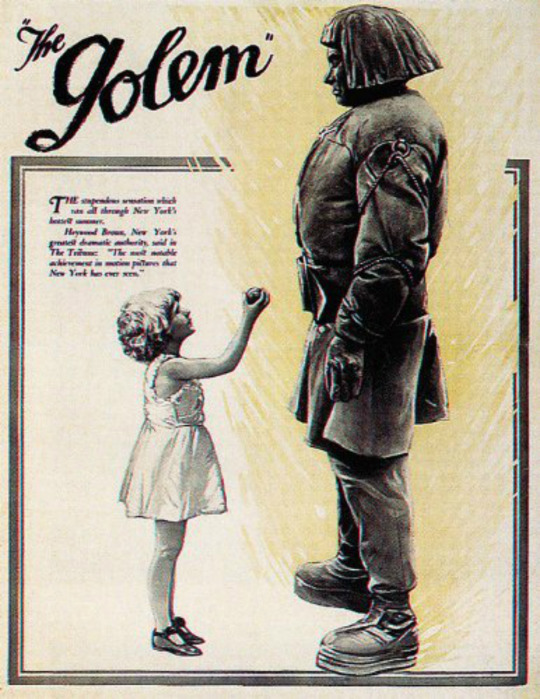
Though THE GOLEM: HOW HE CAME INTO THE WORLD represents an important beat in the development of German expressionist cinema, and any self-respecting nerd has seen plenty of beguiling stills from it, not as many people know it well enough to discuss it on the level that NOSFERATU or THE CABINET OF DR. CALIGARI enjoy. This is surely relatable to availability issues—in fact, the film is part of a trilogy, along with 1915's THE GOLEM and the 1917's THE GOLEM AND THE DANCING GIRL (apparently a primordial example of a horror-comedy!), but these other two are lost to time. The 1920 release, which I'll call DER GOLEM for convenience's sake, is the result of director and star Paul Wegener's desire to update his first effort, which was compromised by a number of disappointing production problems. So, it seems that if we can only have one of his Golem movies, it may as well be this one.
DER GOLEM is the collaboration of writer-director Wegener, his co-writer Henrik Galeen (see also: NOSFERATU), and his co-director Carl Boese, who I assume was especially necessary as Wegener himself plays the title role. The film is adapted from a novel by Austrian author Gustav Myer, which is further based on a Jewish folk tale, and it is interesting to see how this Germanic creative team express their impressions of the history of Jewish persecution. Some critics have found antisemitic underpinnings in the film, largely due to the (delightfully) frightening depiction of the esoteric practice that activates the Golem (which may have a deeper meaning than is immediately apparent), but that would be throwing the baby out with the bathwater. Despite the film being rather brief and broad, it is full of complex, sympathetic characters who transform significantly as the narrative unspools.
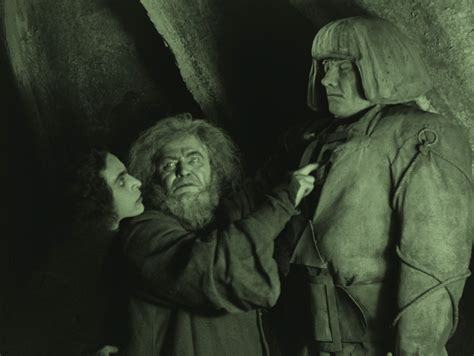
The story takes place in the Jewish ghetto of medieval Prague, where the venerable Rabbi Loew (Albert Steinrück) reads a warning in the stars predicting an imminent danger to his people. Sure enough, an edict comes down from the Holy Roman Emperor (Otto Gebühr) condemning the Jews for their evil character, and ordering their expulsion from the region. Loew creates a hulking clay protector who is brought to life by a sacred word hidden in a star-shaped talisman lodged in his chest, and thinks to impress and entertain the Emperor with his abilities in order to ameliorate the situation. The Golem makes a big splash in the Emperor's court, but the Rabbi's other demonstration doesn't go so well; he implores his audience not to laugh or speak during a magical cinematic projection of the history of the Jewish people, but they can't contain themselves, and the palace begins to crumble. When they are saved by the Golem, the Emperor gratefully rescinds his edict.
Now, this may be enormously crass of me, but I really, deeply think it would be incredibly great if Alamo Drafthouse made one of their pre-show warnings out of this scene. DON'T TALK. DON'T TEXT. OR THE GOLEM WON'T SAVE YOU FROM THE SUPERNATURAL DESTRUCTION OF YOUR EMPIRE.

The other thing I'd like to casually note about this first section, just because it's something I happen to know a little bit about, is that Rabbi Loew's invocation of the goetic demon Astaroth is not really equatable with the idea of devil worship that some viewers have extracted from this—which is fair, because this isn't easy to understand, nor is it readily accessible information. But (and I'm speaking very colloquially here) Astaroth is said to have mastery over esoteric knowledge, and one would work with him in order to gain more occult (for lack of a better word) enlightenment; so, it makes sense that he gives Rabbi Loew the sacred animating word. The other thing about working with demons is that they represent some set of what are usually considered to be negative characteristics: say, slander, wrath, vengeance, etc. So you might work with one of them to deflect these archetypal energies if they are directed at you by someone else. But, you'll also want to be prepared to address these elements in a mature and intelligent way, lest you be overtaken by them yourself. The final effect would be that you've learned an important lesson, and can't be harmed or dominated by whatever malefic characteristic you're dealing with.
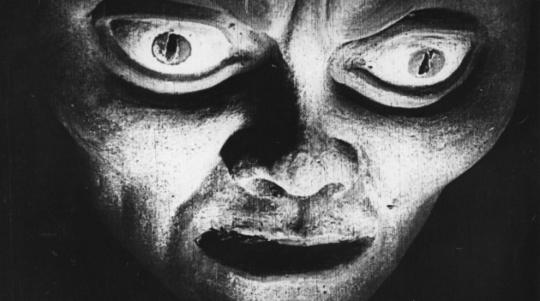
Once the Golem has served its purpose in averting the persecution of the Jews, Loew receives a warning that Astaroth may take it over and use it for vengeful violence. Loew wisely deactivates the creature, but while he goes out to join in communal celebrations, his Assistant makes a big mistake. (The Assistant is played by Ernst Deutsch, a Jewish actor and athlete who I just saw a couple days ago in ISLE OF THE DEAD! I didn't make a note of his wonderful performance as the gently cynical doctor in that film, and now I'm sorry about it) He has fallen in love with the Rabbi's daughter Miriam, and is appalled when he discovers her affair with the Emperor's arrogant squire Florian (Lothar Müthel). The Assistant sets the Golem on Florian, but of course the situation spins out of control, forcing Rabbi Loew to save the community once again.
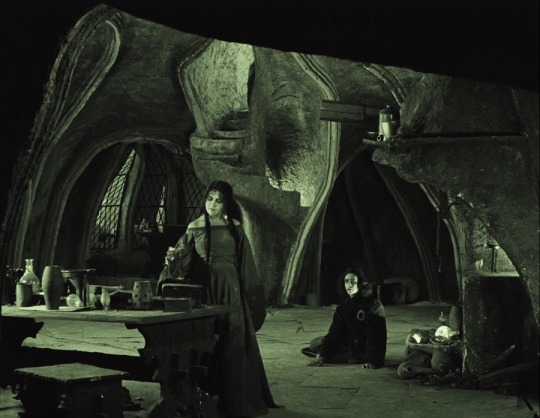
The Golem is an obvious ancestor of Frankenstein's monster, and his misadventure is startlingly similar to that of the better-known creature. Paul Wegener's expressive performance evokes the same range of anger, fear, and naive desire, and his moving interaction with an innocent child is abundantly familiar. In general, DER GOLEM is competitive with FRANKENSTEIN in its emotional complexity; even its villains are tragically human, driven at first by selfish compulsions, but faced with the consequences of their actions, they are sincerely penitent. Even the basics of antisemitism are addressed handily in the film, as the Jews' spartan existence in the ghetto, where their greatest treasures are their traditions and sense of community, flies in the face of the Emperor's accusation that they are avaricious and materialistic. (This coming down from a man bedecked in finery sitting on a gleaming throne, naturally)
The principle gift of DER GOLEM is its advanced aesthetics, owing to the fine work of master cinematographer Karl Freund and architect Hans Poelzig. But the film is bigger than its contributions to film history, telling a sensitive tale that is still surprising in its depth and thoughtfulness. I was glad to see there are new blu ray releases of the film from the last few years, and I'm excited to get my hands on one.

#blogtober#blogtober 2022#golemania#the golem: how he came into the world#der golem: wie er in die Welt kam#paul wegener#carl boese#karl freund#henrik galeen#gustav myer#Albert Steinrück#Otto Gebühr#Ernst Deutsch#Lyda Salmonova#horror#folk horror#german expressionism#hans poelzig#supernatural#occult#esoterism#frankenstein#religion
8 notes
·
View notes
Text
𝑾𝒆𝒍𝒄𝒐𝒎𝒆 𝒕𝒐 𝑬𝒍𝒊𝒐’𝒔 𝒃𝒍𝒐𝒈!
𝑹𝒖𝒍𝒆𝒔:
I will be writing smut, fluff, comfort, and angst. I'm not experienced with writing as much as other writers are, so don't expect the best.
No sa or rape of any sort because we don't tolerate that.
No piss/shit/fart kinks ya dirty fucks.
No pedophilia. Age gaps only can consist of five years apart in my story's when 18+
No human servitude.
I write for any sexuality and any gender.
I do write drabbles and hcs.
I don't write agere/little space on this blog, I'll set up another blog for that!!
I don't care how old you are I can't stop you from reading my stuff 😕🙏🏻
Requests are open!!

𝑭𝒂𝒏𝒅𝒐𝒎𝒔 & 𝒄𝒉𝒂𝒓𝒂𝒄𝒕𝒆𝒓𝒔 𝑰'𝒍𝒍 𝒘𝒓𝒊𝒕𝒆 𝒇𝒐𝒓
The Walking Dead:
Rick Grimes
Carl Grimes
Daryl Dixon
Negan Smith
Glenn Rhee
Ron Anderson
Enid Rhee
Maggie Rhee
Michonne Grimes
(Bonus: I might write for others too. Maybe Shane idk.)
The End Of The Fucking World:
Alyssa Foley
James (last name unknown)
Heartstopper:
Charlie Spring
Nick Nelson
Tao Xu
Elle Argent
Darcy Olsson
Tara Jones
Sahar Zahid
Issac Henderson
13 Reasons Why:
Clay Jenson
Hannah Baker
Justin Foley
Alex Standall
Jessica Davis
IT:
Bill Denbrough
Richie Tozier
Beverly Marsh
Stanley Uris
Mike Hanlon
Henry Bowers
Patrick Hockstetter
Victor Criss
Belch Huggins
The Flash (IMDb):
Berry Allen
Cisco Ramon
Caitlin Snow
Harry Potter:
Harry Potter
Hermione Granger
Ron Weasley
Fred Weasley
George Weasley
Draco Malfoy
Tom Riddle
James Potter
Remus Lupin
Sirius Black
Mattheo Riddle
Theodore Nott
Regulas Black
Stranger Things:
Mike Wheeler
Will Byers
Jonathan Byers
Nancy Wheeler
Lucas Sinclair
Dustin Henderson
Steve Harrington
Henry Creel
Eleven
Eddie Munson
Criminal Minds:
Spencer Reid
Aaron Hotchner
Derek Morgan
Penelope Garcia
Jennifer Jareau
Twilight:
Bella Swan
Edward Cullen
Jasper Hale
Alice Cullen
Rosalie Hale
Carlisle Cullen
Emmett Cullen
Jacob Black
Seth Clearwater
Esme Cullen
Thirteen:
Tracy Freeland
Evie Zamora
Mason Freeland
Melanie Freeland
Anne With An E:
Gilbert Blythe
Anne Shirley
Dianna Berry
Cole Mackenzie
Jerry Baynard
The Goldfinch:
Theodore Decker (older and younger)
Boris Pavlikovsky (older and younger)
The Turning:
Miles Fairchild
Kate Mandell
Flora Fairchild (NO SMUT)
When You Finish Saving The World:
Ziggy Katz
Lila
American Horror Story:
Tate Langdon
Violet Harmon
Kit Walker
Lana Winters
Zoe Benson
Kyle Spencer
Cordelia Goode
Fiona Goode
Jimmy Darling
James Patrick March
Elizabeth/The Countess
Kai Anderson
Winter Anderson
Ally Mayfair-Richards
Austin Sommers
Mr. Gallant
Edward Mott
Rory Monahan
Shameless:
Fiona Gallagher
Lip Gallagher
Ian Gallagher
Mickey Milkovich
Mandy Milkovich
Carl Gallagher
I Believe In Unicorns:
Davina
Sterling
Tokio Hotel:
Bill Kaulitz
Tom Kaulitz
Georg Listing
Gustav Schäfer
Slashers/Halloween movies characters:
Max Dennison
Billy Loomis
Stu Macher
Sydney Prescott
Bo Sinclair
Lester Sinclair
Vincent Sinclair
Jason Voorhees
Freddy Kruger
Michael Myers
Jason Dean
Patrick Bateman
Brahms Heelshire
BONUS singers/actors/youtubers:
Sam Golbach
Colby Brock
Jake Webber
Albert (flamingo)
The Sturniolo Triplets
Finn Wolfhard
Noah Schnapp
And finally... ALEX TURNER 😋😋 (he's so husband material)

!!PLEASE USE THIS RESPECTFULLY AND WISELY!!
#who i write for#carl grimes x reader#kyle spencer#james patrick march#kit walker x reader#tate langdon x reader#twd daryl#daryl dixion imagine#daryl dixon x you#the walking dead daryl#daryl x reader#rick grimes#rick grimes x reader#negan smith#negan smut#negan x reader#twd negan#my rules#please read#please reblog
47 notes
·
View notes
Note
Salam psixologiya və dedektiv mövzusunda kitab önərə bilərsən?
Salam, dedektivə görə yaxşı önərilərim yoxdu çox maraqlanmıram ama psixologiya olar
Alfred Adler- Bireysel Psikoloji.
Alfred Adler- İnsanı Tanıma Sanatı.
Alfred Adler- Nevroz Sorunları.
Sigmound Freud- Psikanalize Giriş.
Sigmound Freud- Rüyaların Yorumu.
S.Freud, J.Brauer- Histeri üzerine çalışmalar.
S.Freud- Rüyaların Yorumu.
S.Freud- Günlük Yaşamın Psikopatalojisi.
S.Freud- Totem ve Tabu.
S.Freud- Kitle Psikolojisi.
S.Freud- Grup Psikolojisi ve Ego anaıizi.
S.Freud- Espiriler ve bilinçdışı ile ilişkileri.
S.Freud- Psikanaliz ve Uygulama.
S.Freud- Aşkın psikolojisi.
S.Freud- Kendi Kendine Psikanaliz.
Gustave Le Bon- Kitleler Psikolojisi.
G.Le Bon- Maddenin evrimi.
Carls Gustave Jung- Psikolojide tipler.
C.G.Jung- Keşfedilmemiş benlik.
C.G.Jung- Psikoterapi pratiği.
C.G.Jung- Analitik psikolojinin temel ilkeleri.
C.G.Jung- Feminen.
Erich Fromm- Sağlıklı Toplum.
E.Fromm- Çağımızın Özgürlük Sorunu.
E.Fromm- Psikanalizin Bunalımı.
E.Fromm- Freud Düşüncesinin büyüklüğü ve sınırları.
Karen Horney- Nevrozlar ve İnsan gelişimi.
David Buss - Evrim Psikolojisi
K.Horney- Çağımızın Tedirgin insanı.
K.Horney- Kendi kendine psikanaliz.
K.Horney- Kadın psikolojisi.
K.Horney- Psikanalizde yeni yollar.
K.Horney- İçsel Çatışmalarımız.
David Myers- Sosyal Psikoloji.
E.Aronson- Sosyal Psikoloji.
Desmond Morris- Çıplak Maymun (Təkamül Psixologiyası).
Robin Baker- Bebek Savaşları.
Rihard Webster- Beden dili rehberi
Mehmet Çelikyay - Diksiyon, Beden dili ve Hitabet
Joe Navarro- Bədən Dili.
Bu son 3ü bədən dili haqqındadı
Bəzilərinin tərcüməsi olmaya bilər dəqiq bilmirəm hansılardır oxumadıqlarım var içində
10 notes
·
View notes
Text

Carl Gustav Jung (1875-1961) était un psychiatre et psychothérapeute suisse qui a fondé la psychologie analytique. Il est souvent considéré comme l'un des plus grands penseurs du XXe siècle en matière de psychologie. Voici quelques points saillants de sa vie et de sa carrière :
1. **Théorie des Archétypes :** Jung croyait que des symboles universels, appelés archétypes, résident dans l'inconscient collectif de l'humanité. Ces archétypes peuvent apparaître dans les rêves, les mythes et les contes de fées à travers différentes cultures.
2. **Inconscient Collectif :** Contrairement à Sigmund Freud, qui croyait en un inconscient personnel, Jung a introduit l'idée d'un inconscient collectif, une sorte de mémoire ancestrale partagée par toute l'humanité.
3. **Processus d'Individuation :** L'individuation est le processus par lequel une personne devient l'individu qu'elle est intrinsèquement destinée à être. C'est un processus de réalisation de soi et de réalisation de son potentiel.
4. **Types Psychologiques :** Jung a développé une théorie des types psychologiques qui a influencé la création de tests de personnalité modernes, comme le test MBTI (Myers-Briggs Type Indicator).
5. **Synchronicité :** Jung a également introduit le concept de synchronicité, l'idée que certains événements sont liés par le sens plutôt que par la causalité.
Jung a écrit de nombreux ouvrages influents, dont "L'homme et ses symboles", "Les types psychologiques" et "Les racines de la conscience". Ses idées continuent d'influencer la psychologie, la philosophie, la religion, l'art et la littérature.
4 notes
·
View notes
Note
¿Conoces las 16 personalidades basadas en los trabajos de Jung? te invito a que te hagas la prueba y nos cuentes ¿qué tipo de personalidad tienes? Además, cuéntame, ¿Cómo piensas que el tipo de personalidad afecta las relaciones? ¿Crees que podría llegar a determinarlas? ¿Por qué? ¿Qué tipo de personalidad crees sería más compatible contigo y por qué?
Hola anónimo o anónima que me hizo pensar y meditar a fondo (jajaja)
Me encantan esta clase de preguntas, creo que son las que más disfruto.
Bueno, vamos por partes:
1. «¿Conoces las 16 personalidades basadas en los trabajos de Jung?»
— Sí, conozco sobre el tema. No lo domino, pero me parece muy interesante.
Pero hay mucha información sobre el tema, y muchos puntos de vista totalmente opuestos, y en algunas ocasiones es complicado saber qué fuente es la correcta. La que yo conozco es la siguiente (la cual no creo que sea la correcta, solo es la que conozco jaja), no sé si es a la que tú te referías, si no es, estaremos hablando de cosas totalmente opuestas (jajaja).
Y como me gusta aprender en comunidad, compartamos un poco del tema (si estoy mal en algo, me corrigen por favor):
Entiendo que las 16 personalidades están basadas en la teoría de tipos psicológicos desarrollada por Carl Gustav Jung. Estas personalidades son el resultado de la adaptación del indicador de tipo Myers-Briggs (MBTI), y fue creado por Katharine Cook Briggs y su hija Isabel Briggs Myers durante la Segunda Guerra Mundial, se basa en las ideas de Jung. Las 16 personalidades se dividen en cuatro dimensiones dicotómicas, cada una con dos opciones.
Están son las cuatro dimensiones y sus opciones:
a) Dimensión de la actitud:
- Extraversión (E): Las personas extrovertidas se centran en el mundo exterior y obtienen energía de la interacción con otras personas.
- Introversión (I): Las personas introvertidas tienden a centrarse en su mundo interior y obtienen energía de la reflexión y la soledad.
b) Dimensión de la percepción o la forma de obtener información:
- Sensación (S): Las personas que prefieren la sensación confían en la información tangible y concreta que pueden percibir con sus sentidos.
- Intuición (N): Las personas intuitivas confían en la información abstracta, simbólica o futurista que va más allá de lo que se percibe directamente.
c) Dimensión de la función de decisión:
- Pensamiento (T): Las personas que prefieren el pensamiento toman decisiones basadas en la lógica y el análisis objetivo.
- Sentimiento (F): Las personas que prefieren el sentimiento toman decisiones basadas en sus valores personales y en cómo afectarán a las personas.
d) Dimensión de estilo de vida:
- Juicio (J): Las personas que prefieren el juicio prefieren una vida planificada y estructurada, les gusta tener todo decidido.
- Percepción (P): Las personas que prefieren la percepción prefieren una vida más flexible y espontánea, adaptándose a las circunstancias en lugar de planificar de antemano.
Al combinarse estas cuatro dimensiones, se obtienen las 16 personalidades distintas, cada una representada por una combinación de las letras E/I, S/N, T/F, y J/P. Por ejemplo ISTJ, ENFP, INFJ, etc.
Cada una tiene características y rasgos específicos que describen la forma en que una persona tiende a interactuar con el mundo. Pero, es importante destacar que, aunque el MBTI es popular, ha recibido críticas muy duras en el ámbito científico por su falta de validez y confiabilidad en términos de medir la personalidad de manera consistente.
2) «Te invito a que te hagas la prueba y nos cuentes ¿qué tipo de personalidad tienes?»
— Me hice la prueba, hoy 25 de noviembre del 2023, y lo realicé aquí: 16personalities. No sé si es el test más confiable, pero me recomendaron ese (jaja). Y mi resultado es: INFJ-T (Abogado)
Actitud: 42% Extroversión y 58% Introversión.
Forma de obtener información: 78% Intuición y 22% Sensación u Observar.
Función de decisión: 25% Pensamiento y 75% Sentimiento.
Estilo de vida: 58% Juicio y 42% Prospección.
Identidad: 29% Asertivo y 71% Cauteloso. (estos últimos son extras en la página donde hice el test, y aquí es donde me comienzo a perder un poco jaja)
Según esto, indica que los Abogados son visionarios, silenciosos y con frecuencia actúan como idealistas incansables que inspiran a otros. Nada ilusiona más a los Abogados que mejorar la vida de otra persona.
Y esta es una breve descripción de la página donde hice el test:
Abogado(INFJ-A / INFJ-T)
«Trata a las personas como si fueran lo que deben ser y les ayudarás a convertirse en lo que son capaces de ser.» — Johann Wolfgang Von Goethe
Los Abogados (INFJ) pueden ser el tipo de personalidad más raro de todos, pero sin duda dejan su huella en el mundo. Idealistas y con principios, no se conforman con ir por la vida sin hacer nada, sino que quieren dar la cara y marcar la diferencia. Para las personalidades de Abogados, el éxito no proviene del dinero ni del estatus, sino de la búsqueda de la plenitud, de ayudar a los demás y de ser una fuerza del bien en el mundo.
Aunque tienen grandes metas y ambiciones, los Abogados no deben confundirse con soñadores ociosos. A las personas con este tipo de personalidad les importa la integridad y rara vez están satisfechas hasta que han hecho lo que saben que es correcto. Concienzudos hasta la médula, se mueven por la vida con un claro sentido de sus valores y su objetivo es no perder nunca de vista lo que realmente importa, no según otras personas o la sociedad en general, sino según su propia sabiduría e intuición.
Pero, aquí es donde mi yo analítico ha comprendido que los test tienden a variar según algunos sesgos como: el cómo te sientes el día que lo hiciste, circunstancias recientes como el duelo o una ruptura amorosa, la edad e incluso, si sabes como funcionan o a donde van los resultados que se puedan llegar a dar, podrías manipularlos un poco.
Otra de las cosas que he aprendido es que un test no determina a calidad tu personalidad, puede dar una referencia general. Ahora, si tuviera que escoger un test de personalidad, te recomiendo más uno de fortalezas, se llama CliftonStrengths 34, revela un perfil completo de talentos únicos (34 fortalezas en total, con 5 predominantes), es de Gallup. Y como dije antes, es solo un punto de partida en el vasto mundo del autoconocimiento.
3) «¿Cómo piensas que el tipo de personalidad afecta las relaciones? ¿Crees que podría llegar a determinarlas? ¿Por qué?»
— La verdad, creo que nada y todo puede afectar a una relación dependiendo del interés que le das a algo.
Por ejemplo: conocernos y saber cuáles son nuestros puntos de estrés o de conflicto, cómo suelo reaccionar ante los problemas o como soy socialmente, cómo percibo el mundo, cómo entiendo las cosas y como demuestro afecto, solo por mencionar algunos aspectos, todo eso ayuda para sentirme más seguro de mismo, amar mis defectos y mejorar en ellos, pero también a enfocarme en lo que soy bueno y fortalecerme más esas cosas que me hacen bien. Y todo ello me ayuda a dar pasos de aprendizaje que me llevarán a la madurez personal e integral. Y eso, eso se agradece en una relación.
Pero si me enfoco en el lado oscuro de mi personalidad, eso a veces nos aleja del potencial que tenemos o aleja a las personas que nos pueden complementar, ayudar y acampanarnos en el camino de la madurar.
Así que no, nada y todo determina una relación, pero todo depende de la importancia que le des a ese algo. (Y esto solo es mi punto de vista, lo que he aprendido hasta este momento, no es un absoluto, solo es lo que creo y vivo).
4) «¿Qué tipo de personalidad crees sería más compatible contigo y por qué?»
— Dar este tipo de respuesta es limitar a ese gran ser que conoceré. Porque yo la quiero amar por lo que es, no por lo que yo quiero que sea conmigo. Ella, para mí, ya es una gran mujer, una con la cual quiero compartir, convivir, coincidir y madurar en resto de mi vida mortal.
Lo siento por lo larga de mi respuesta, pero para qué me hacen preguntan tan profundas e interesantes jajaja
Vida plena para ti 🖖🏻☺️
6 notes
·
View notes
Text
its so funny to me that my Myers-Briggs personality type is used a lot in comedy like I feel close to really stupid characters ( im entp)
honourable mentions from my very very long list of em:
gina linetti (b99)
barney stinson (himym)
megamind
darcy (mcu)
louise belcher (bobs burgers)
bill cipher (gravity falls)
luke dunphy (modern family)
crowley (good omens)
barry b. benson (bee movie)
beetlejuice (musical)
Wallace (Wallace and Gromit)
ed (ofmd)
roach (ofmd)
gustave h. (grand budapest hotel)
willy wonka
bugs bunny
#b99#gina linetti#himym#barney stinson#megamind#darcy mcu#i forgot her last name#bobs burgers#bobs burger movie#louise belcher#gravity falls#bill cipher#modern family#Luke dunphy#good omens#crowley#anthony j crowley#bee movie#barry b benson#beetlejuice#beetlejuice musical#wallace and gromit#ofmd#ed teach#roach#grand budapest hotel#gustave h#charlie and the chocolate factory#willy wonka#bugs bunny
4 notes
·
View notes
Text
Jungian Therapy
Source: Psychology Today
Jungian therapy, sometimes known as Jungian analysis, is an in-depth, analytical form of talk therapy designed to bring together the conscious and unconscious parts of the mind to help a person feel balanced and whole. Jungian therapy calls for clients to look at the "real" self rather than self they present to the outside world.
Jungian therapy comes out of the work of Carl Gustav Jung, a Swiss psychiatrist active in the early 20th century. Jung was Sigmund Freud's chosen protege, although the two later split over differing ideas on the subconscious. Along with Freud, Jung is one of the most famous people in the history of psychology. His ideas have influenced many today's therapy types, as well as the field of art, film, music, and culture more generally. The concepts of "introversion" and "extroversion" come from Jung, as does the idea of having a "complex."
The modern-day lie detector test comes out of Jung's word association exercises. The artist Jackson Pollock was a devoted Jungian therapy practitioner, and his paintings were often the result of his attempts to explore his unconscious. The Myers-Briggs personality test, though no longer considered scientific, was developed by jungian acolyte.
In recent decades, other therapy types grounded more in empiricism and evidence became more popular than Jungian therapy, which includes elements of mysticism and faith. Still, Jungian therapy is practiced today and retains a devoted following of clients and practitioners.
When It's Used
Jungian therapy attempts to explain all of human psychology. As such, it can be used to address nearly every mental malady people experience. Primarily, it has been used to treat:
•Depression
•Anxiety
•Grief
•Obsessive-compulsive disorder
•Phobias
•Relationship problems
•Low self-esteem
•A lack of purpose or direction in life
It is also appropriate for anyone who wants a deeper understanding of themselves and is willing to make a commitment to the work involved in the therapeutic process.
What To Expect
In Jungian therapy, a patient is asked to explore their conscious and unconscious minds with help of the therapist in order to bring into balance the areas of their personality that are misaligned and create unity between the conscious and unconscious minds.
Jungian proposed several techniques for learning what the unconscious mind contains, including:
•Dream analysis: Jung viewed dreams as communications from the unconscious mind. Through analysis, Jungian therapist believe that the message can be interpreted and used as information to help explain why the patient is ill at ease and which aspects of a patient's personality need work in order to bring about balance and unity.
•Word association:In word association exercises, a Jungian therapist will say specific words and record how long it takes the patient to respond with the first thing that comes to mind. The therapist might run through the list a second or third time, noting changes in responses and response times. Changes in responses between the tests, or anomalies in the time it takes for the patient to respond, are believed to be instructive in indicating areas about which the patient feels distress.
Art or dance therapies: Jungian analysis believed that painting, drawing, and dancing are conduits through which the unconscious mind can express itself and that the exercises themselves may help repair the areas of a patient ailments that come through their art-making.
Jungian therapy is fundamentally a talk therapy, and includes exploring sometimes unpleasant parts of your mind or painful previous experiences (what Jung called one's "shadow") with the aim of fully understanding what your true problems are and how to resolve them to the greatest extent possible.
Depending on your situation and the agreement you make with your therapist, you will meet for regularly scheduled sessions, one or more times a week. Jungian therapy has no time limit recommendations. Patients can spend years exploring and working on themselves.
A recent Meta-Anaylsis of empirical studies on the outcomes of Jungian therapy reports that many find success with the treatment, finding "significant improvements" of symptoms and interpersonal problems. Further, the analysis found that the improvements last beyond the end of treatment, with patients continuing to improve on their own given what they have learned.
How It Works
Jungian therapy focuses more on the source of a problem than on the manifestation or symptoms. Jung believed that the shadow, an individual's repressed experiences and memories, in combination with the "collective unconscious," or the inherent hidden beliefs that everyone in a given society at a given time has, result in an imbalance between conscious awareness and the unconscious mind that has a detrimental effect on one's emotional life.
In analysis, a patient must explore these forces and influences to achieve unity between the conscious and unconscious mind. Success in this endeavor Jung called "individuation," or wholeness. Jung believed that individuation represents one's true nature, and that a patient will feel satisfied and complete upon its achievement. He also believed that individuation was the closest someone could come to God.
If one tries simply to relieve the symptoms, the underlying issues will not be resolved and are bound to resurface, according to Jungian therapy. The success of the treatment depends on the client's commitment to regularly scheduled sessions and intense work.
What To Look For In A Jungian Therapist
A certified Jungian therapist is a licensed mental health professional who has completed advanced training in a program accredited by International Association for Analytical Psychology. This training is intensive and can take a therapist four to six years to complete.
The Jungian therapist can be found in health clinics, private practice, and other settings and institutions. In addition to finding a qualified practitioner, it is important to work with someone you trust and with whom you feel comfortable working working in a therapeutic environment.
Screen your potential therapist either in person or over video or phone. During this initial introduction, ask the therapist:
•How they may help with your particular concerns
•Whether they have dealt with this type of problem before
•Their process and timeline for treatment.
0 notes
Text




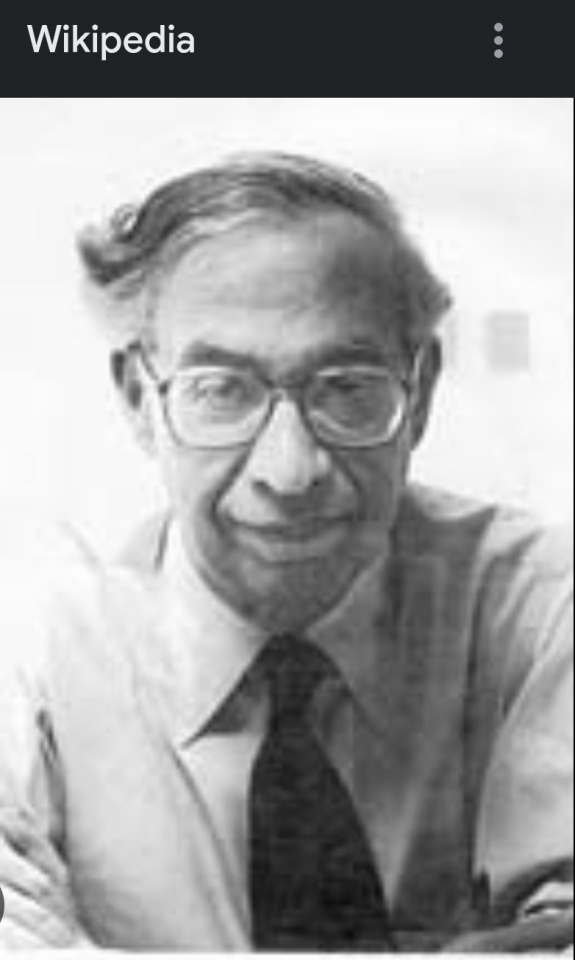



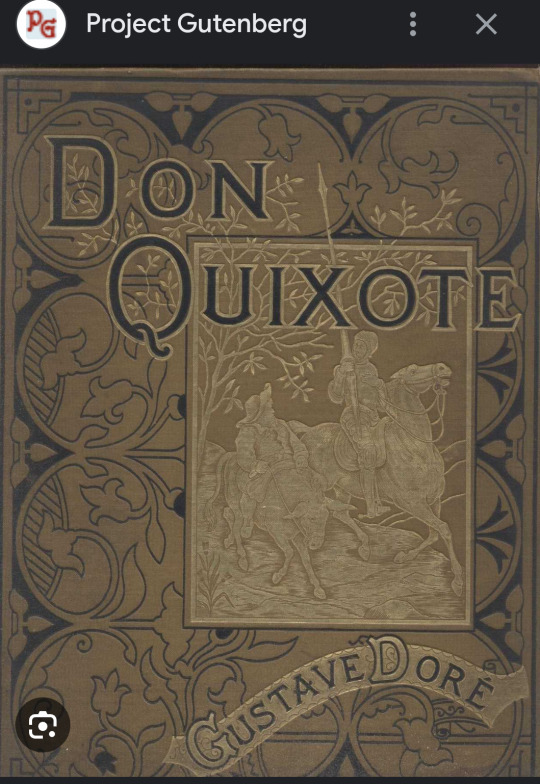

Pics:
1. The official United¹ journal published stories, poems, articles, etc written by their members.
The cover's from 1915, when Lovecraft was vice-prez of the UAPA.¹
2. Still on the trail of the mysterious article writer (W.E. Griffin)² that HPL just had to write a poem about...
The pic's from an article about the Circleville Mystery Writer,³ who terrorized so many folks during the 1970s.
3. "The Fair Penitent" (1703) is a play from where Lothario⁴ got its modern meaning of "notorious womanizer."
But, the play's actually an adaptation of 1632's "The Fatal Dowry" by Nathan Field & Philip Massinger.
4. Bullfinch's Age of Fable was 1 of Howard's earliest read books - along with 1,000 & 1 Nights, Rime of the Ancient Mariner & Metamorphosis.⁵
5. Don Wollheim, was an American editor, publisher, writer, critic & fan.
Among his works are: Edge of Time, Secret of Saturn's Rings, Mike Mars Flies the Dyna-Soar, Universe Makers & A Year Among the Girls - about his crossdressing experiences.
6. Basilisk⁶/Demon design published in a journal of the Fantasy Amateur Press Association.
7. An interesting looking Don Wollheim short story collection.
I'm just a sucker for weird facts, strange tales & other such stuff.
8. A wonderfully fantastic AI(?) work that truly captures the funny insanity which runs thruout Don Quixote.⁷
9. A Don Quixote edition - with wood- cuts by the great Gustave Gore!⁸
Truly a treasure.
10. Mike Myers's 2nd Austin Powers film, where his mojo⁹ is so cruelly stolen - & used!!
1914: Output.
Intro: Lovecraft's short & satirical response to W.E. Griffin's UAPA article on seduction.¹⁰
This is 1 of HPL's works on amateur affairs, criticism & writing.
Work: Another early effort that shows Howard's limitations in writing poesy. Though things start out well enough.
"By a strange spell,¹⁰ upon... virgin heart(s), Lothario (Griffin) plies his art."
This is followed up with a long section about a man who's a nymphomaniac - among other things (such as a stalker, creep, etc).
"The dozen faces, he see(s) daily, Red with the blush of... modesty:¹⁰ No scruples... restrain his zeal."
"Each hour he strives... new conquests to attain; Yet, on(c)e attained, for more he burns."
"(He) surveys the fields... return(ing) to the chase. To his... lips the willing (&) fair,¹¹ Offer their own... eternal love oath."¹²
Suddenly, the whole experience is over & we're left with questions & a small mystery...
"From what cause ha(s) all his magic grown?⁹ Easy to find (out): He's kissed the __?"¹³
Notes in Part 2.
0 notes
Text
Los must-read de Carl Jung
"Tipos psicológicos" (1921)
En este libro, Jung introduce el concepto de tipos psicológicos, que es la base de lo que hoy conocemos como el indicador Myers-Briggs Type Indicator (MBTI). Jung describe las actitudes de introversión y extroversión y las funciones psicológicas de pensamiento, sensación, intuición y sensación, estableciendo una tipología que busca comprender las diferencias individuales en el comportamiento humano.
"El hombre y sus símbolos" (1964)
Este es uno de los trabajos más accesibles de Jung para el público general. En él, Jung y sus colaboradores se enfocan en la importancia de los símbolos y su interpretación en la psicología analítica. El libro destaca cómo los símbolos juegan un papel crucial en los procesos inconscientes y en la interpretación de los sueños, la imaginación y las manifestaciones culturales.
"El libro Rojo" (2009)
El "Libro Rojo" o "Liber Novus" es una de las obras más fascinantes y enigmáticas de Carl Gustav Jung. No es un texto académico en el sentido tradicional, sino más bien una narración personal, profunda y altamente simbólica de las experiencias interiores de Jung. El manuscrito, creado entre aproximadamente 1914 y 1930, permaneció sin publicar y en gran medida desconocido para el público hasta 2009, cuando finalmente fue editado y publicado en una edición facsímil. El "Libro Rojo" se compone de las experiencias y visiones de Jung durante un período que él mismo describió como una confrontación con el inconsciente. Este período de introspección comenzó después de su ruptura profesional con Sigmund Freud, lo que llevó a Jung a explorar más profundamente su propio psiquismo. El libro contiene relatos de sus sueños, visiones y diálogos imaginativos con figuras internas, representadas a través de una narrativa rica en mitos y simbolismo.
0 notes
Text
youtube
1/2 of 1 % men in the world.
Myers-Briggs theory is an adaptation of the theory of psychological types produced by Carl Gustav Jung. It is based on 16 personality types, which Jung viewed as stereotypes (Jung 1921, p. 405). They act as useful reference points to understand your unique personality (Jung 1957, p.
Carl Gustav Jung was a Swiss psychiatrist and psychoanalyst who founded analytical psychology. He was a prolific author, illustrator, and correspondent, ...
Analytical psychology · Publications · Emma Jung · Jung (disambiguation)
0 notes
Text
Scripture #? Klara 'Olive' Kér

(Braindump#0):
I am Klara Kér, but you may call me Olive if you so desire.
I go by she/her and conjugate to the feminine.
My body is completely female. And I have no interest in sex nor romance.
I was born on August 1st 1996, alongside my twin brother.
My astrological sign is Leo. (extended Zodiac would be Lepio)
I am 5'8" tall.
I weigh 144 lbs.
I am a INTJ personality (Myers-Briggs personality test)
I am autistic and have attention deficit disorder.
I worked as a bookstore clerk in the past, and I am currently working as a creative + technical writer.
I have a social tribe of close friends to call my very own with whom I do neat activities each week or so...
Androgynous / gender-neutral soft grunge + retro grunge wardrobe with hoof shoes and much accessories...
Bullet journaling, gratitude tracking, subliminal track listening and meditation habits.
Erudite lady who learns much well and fast. And writes many many notes in her own papers.
Goes outdoors, does shopping and spends much time alone physically-wise.
Gentle, deeply caring, considerate.
Honest, turbulent and forgetful.
Past & context divergences
My father is Gustav Hayden, a handsome toymaker who is very understanding and softly caring of himself and his family;
My mother is Falah Becker, a artistic polyglot and philosopher working in the linguistics field, much spare time, social relationships and has much technical know-how as well;
My twin brother is Deno Hayden, ;
My younger brother is Wyatt Hayden, ;
Ava, my social assistance synthetic serf;
Shoshona, our black turkish Angora cat;
(Special desires & powers)
600 years lifespan
Chronokinesis
True Polymorph
1 note
·
View note
Text
Réussir le test MBTI en entretien d'embauche

De nombreuses entreprises utilisent des tests de personnalité pour sélectionner les candidats.
Ces tests ont pour objectif de déterminer leurs traits de caractère et de savoir s’ils possèdent toutes les qualités nécessaires pour le poste.
La sélection ne se fait bien évidemment pas que sur ces tests de personnalité. Mais ils permettent d’apporter un éclairage supplémentaire sur la candidature. Ils peuvent également orienter les questions du recruteur lors de l’entretien d’embauche. 😲
Il existe de nombreux tests de personnalité utilisés en recrutement : le test SOSIE, le BIG FIVE, le test PAPI (que je t’ai présenté dans un précédent article) et le MBTI.
Dans cet article, je vais donc te présenter le « leader mondial 🥇» des tests de personnalité : le test MBTI.
Qu’est-ce-que le MBTI en entretien d’embauche ?
Le MBTI pour Myers Briggs Type Indicator a été créé en 1962 par Isabel Briggs Myers et sa mère Katherine Cook Briggs.
Elles se sont basées sur les travaux de Carl Gustav Jung 🤯 L’illustre psychiatre suisse a développé la théorie des types psychologiques, une théorie selon laquelle nos traits de personnalité peuvent influer sur nos comportements et nos prises de décisions.
Le test MBTI consiste donc à remplir un questionnaire d’environ 15 à 20 mn. Les questions fermées (entre 93 et 222 selon les tests) ont pour but de définir le profil de personnalité d’un candidat à un entretien d’embauche :
- Quelle est ton attitude lorsque tu es confronté à certaines situations ?
- Est-ce que tu es plutôt introverti ou extraverti ?
- Comment organises-tu ton travail ?
- Pour prendre une décision, tu te bases plutôt sur tes sentiments ou ta pensée logique ?
- etc…

Les réponses à ces questions permettent alors de définir ton profil parmi les 16 types de personnalité référencés.
Dans le cadre professionnel, on estime à 20 000 le nombre de tests MBTI effectués quotidiennement. Mais seuls les praticiens certifiés MBTI peuvent faire passer l’un des 6 tests officiels. Ceci étant dit, il existe de nombreux tests gratuits que l’on peut trouver facilement en ligne. 😉
Comment fonctionne le test MBTI en entretien d’embauche ?
Selon les réponses que tu apportes au questionnaire, on t’attribue 4 lettres qui correspondent à l’un des 16 types de personnalité du test MBTI.
Quelles sont ces lettres ?
- I pour Introverti / E pour Extraverti
- S pour Sensation / N pour iNtuition
- J pour Jugement / P pour Perception
- T pour pensée / F pour sentiment
Mais « pensée » ne commence pas par T et « sentiment » ne commente pas par F !!!! 😲
Ok, ok, ok : T pour "Thinking" (pensée) et F pour "Feeling" (sentiment) 😂
Le résultat est donc donné sous la forme d’une suite de 4 lettres correspondant aux 4 préférences déterminant la personnalité type du candidat. On comptabilise à ce jour 16 types de personnalité :
- INTJ : l’organisateur
- INTP : le chercheur
- ENTP : l’inventeur
- ENTJ : l’entrepreneur
- ESTP : le promoteur
- ESTJ : le manager
- ENFP : le psychologue
- ENFJ : l’animateur
- ESFP : l’acteur
- ESFJ : le bon vivant
- INFJ : le conseiller
- INFP : l’idéaliste
- ISTJ : l’administrateur
- ISFP : l’artiste
- ISFJ : le protecteur
- ISTP : l’artisan
Dans la population, certains types de personnalité sont bien évidemment plus répandus que d’autres. Par exemple, on sait que 13% des individus sont des ISFJ alors que seulement 1% sont des INFJ. Ce sera alors au recruteur de déterminer le profil de personnalité le plus adapté au poste visé.
Pourquoi utiliser le test MBTI en entretien d’embauche ?
Pour identifier les forces et les faiblesses des candidats
Si comme je te le conseille régulièrement dans le blog, tu prépares correctement ton entretien 😉, tu auras forcément préparé ta réponse à l’une des questions incontournables : « quelles sont vos qualités et vos défauts ? ».
En conséquence, les recruteurs le savent, les réponses ne sont pas toujours très objectives 🤥. C’est pour cette raison, que les tests de personnalité comme le test MBTI, permettent de découvrir les forces et les faiblesses des candidats de manière indirecte.
Le recruteur pourra alors s’appuyer sur les résultats du test pour approfondir certains points et apprécier la cohérence de la candidature avec le poste à pourvoir.
Pour évaluer le rapport aux autres
Lorsqu’il recrute un nouveau collaborateur, le manager opérationnel souhaite enrichir son équipe de nouvelles compétences.
On le sait, certains profils peuvent parfaitement déstabiliser une équipe. L’un des objectifs du recrutement est donc d’identifier rapidement les personnalités les plus à même de s’intégrer rapidement et efficacement dans le collectif. 😇
A ce titre, le test MBTI est un outil pertinent pour améliorer la communication et la gestion des conflits en entreprise.

Pour apprécier les méthodes de travail
Lors d’un entretien d’embauche, il est difficile d’identifier le style de communication d’un candidat, son approche de résolution de problèmes ou son mode de pensée.
En identifiant un profil de personnalité, le test MBTI en entretien d'embauche va donc apporter une réelle valeur ajoutée à l’évaluation de la candidature. On sait par exemple qu’un profil INTP aura besoin d’autonomie pour être performant. Alors qu’un profil ENFJ aura besoin de travailler en équipe pour s’épanouir pleinement au sein de l’entreprise.
Les limites du test MBTI
Le test MBTI, comme la plupart des tests de personnalité, doit être utilisé comme une aide au recrutement et certainement pas comme un outil strictement sélectif. On peut notamment identifier plusieurs limites à ce test.
L’irrégularité des résultats
Les contours d’une personnalité ne sont pas nécessairement figés dans le temps. En fonction de son environnement et avec le temps, on peut changer, progresser, régresser, évoluer et s’adapter.
Il serait donc réducteur de vouloir classer une personne de manière définitive en fonction de ses réponses à un test de personnalité.
Le test MBTI en entretien d'embauche permet d’obtenir une photographie 📷 d’un candidat à un instant t. Il doit être considéré comme un indicateur, mais certainement pas comme une vérité immuable.
Les biais de désirabilité sociale et de conformité
Le test MBTI est un test déclaratif. Le recruteur n’a donc aucune certitude quant à la sincérité des réponses du candidat.
Il est parfaitement « humain » de vouloir privilégier des réponses qui plairont (selon nous) à l’employeur. C’est ce qu’on appelle le biais de désirabilité sociale. Il peut d’ailleurs intervenir de manière totalement inconsciente.
Même s’il n’y a pas de bonne ou de mauvaise réponse, le candidat aura souvent tendance à orienter ses réponses en fonction des attentes supposées du recruteur et de la norme sociale (biais de conformité).

Les difficultés d’introspection
Par principe, le test MBTI demande au candidat de connaître parfaitement son comportement et ses aspirations.
Pourtant, sommes-nous toujours capables de comprendre et d’évaluer avec justesse notre propre mode de fonctionnement ?
Tout le monde n’a pas les mêmes capacités d’introspection 🤔. Le regard extérieur sur notre mode de fonctionnement est d’ailleurs souvent plus pertinent que le regard que nous portons sur nous-même.
Conclusion
Nous l’avons vu, les tests de personnalité comme le MBTI sont très utilisés dans les processus de recrutement. Ils permettent de déterminer les principaux traits de caractère des candidats et de savoir s’ils possèdent les qualités requises pour le poste.
Les 16 profils de personnalité du test MBTI permettront notamment d’évaluer les forces et les faiblesses d’un candidat, son rapport aux autres et ses méthodes de travail.
Mais ce test présente aussi de nombreuses limites et doit essentiellement être utilisé comme un indicateur, une photographie d’un candidat à un instant t. L’irrégularité des résultats, les biais de désirabilité sociale et de conformité et les difficultés d’introspection doivent nous inciter à relativiser les résultats.
Et toi, dis-moi dans les commentaires si tu as déjà eu l’occasion de passer ce test ? Qu’à tu pensé des résultats ? Le recruteur s’est-il appuyé sur les résultats du test lors de l’entretien d’embauche ? Je suis impatient de te lire 😍
Read the full article
0 notes
Text
SELECTING A CAREER INTELLIGENTLY
Around us we find many examples where siblings of a professionally established and successful parent do not perform so well professionally in spite of all the resources, knowledge and support at their disposal. One reason that comes to my mind for this may be that they lack the thrust and effort required due to not so compelling reasons for excelling. However, at the same time there are examples where the same child has excelled in another field of his choice.This establishes one fact that we are different and made by almighty to excel in different fields.
Money, resource and support work up to one stage but beyond that it is your natural talent that gives you excellence. We can find many such examples where siblings of poor farmer or labour cracking civil services exam or reaching such heights of excellence that makes others envy.So it becomes more pertinent to find out what profession we are made for before going ahead with
Follow Now
Your personality and behaviour and its suitability to a career of your choice is one important factor apart from your natural talents (God Gift) for your professional excellence. Western world has explored it in depth and used it over the years. There are no. of such established tests used frequently in the corporate and western world at the time of interview and promotion with varied degree of accuracy. To name a few:
1. MBTI ( Myers and Briggs) – 1962 (Personality Test)
First published in 1962 after 20 years of research by a mother- daughter team. Most popular personality test in the world and more than 20 lac people take it every year.
2. Jung Typology ( Carl Gustav Jung) – 1921
This is the world's most established and well respected test model of personality and behaviour.
It categorised people into 16 personality types.
Career counselling
3. DISC ( William Marston) – 1928 (Personality Test)
This is behaviour assessment tool based on the theory of psychologist Dr William Mortson
4. RIASEC ( John Holland) – 1919 (For Professional Preferences)
Based on the famous “Theory of work” by John Holland it helps in identifying your career choice interests.
Read More…….
0 notes
Text
O que é Tipologia? MBTI?
Nesse post vou explanar sobre Tipologia/MBTI e algumas questões.
O que é MBTI ou Tipologia Junguiana? é a mesma coisa? ein Sora?
-------
Tipologia Junguiana: É um método para investigação de fenômenos da psique(consciência) criado por Carl Gustav Jung. Foi desenvolvido em colaboração com William James, Von Franz, Emma Jung e demais psicólogos do século XX.(1)

Objetivo: Elaborar casos clínicos e o conhecimento clínico.
Características: Jung buscou na filosofia, na história e na ciência antropológica uma descrição do funcionamento humano típico. Utilizando seguidamente o material clínico coletado em décadas de prática clínica.
Adendo* Jung não acreditava em uma ciência psicológica puramente objetiva mas buscava uma psicologia objetiva de modo que o psicólogo veja de modo "não muito subjetivo".(2)
Resolução: Seu livro foi considerado "confuso e obscuro" pela academia e psicologia de sua época, retornando mais tarde no final do sec XX com expoentes como dra. Louise Von Franz e Nise da Silveira. A tipologia abriu margem para a psicologia abordar novamente a consciência e a autoconsciência como um fator terapêutico.
------------------------
MBTI "Myers-Briggs, indicador tipológico": É um teste desenvolvido por Katharine Cook Briggs e sua filha Isabel Briggs Myers durante a Segunda Guerra Mundial, baseadas nas teorias de Carl Gustav Jung sobre os Tipos Psicológicos.

Objetivo: Ser aplicado na administração e gerar produtividade.
Adendo* Myers & Myers (3) escreveram uma parábola em que apresentam o processo dominante (função superior) como um general e o processo auxiliar(função auxiliar) como um ajudante de ordens.
Características: Possui viés comportamental, desenvolvido como ferramenta de avaliação para RH de empresas, seu objetivo(gestão administrativa) distoa muito do seu criador.
Resolução: Mesmo com o viés devemos agradecer esse teste por popularizar teorias da personalidade de viés não-biológico e levar muitas pessoas a conheceram a psicologia junguiana.
-----------------
Aqui eu sou um amante da diversidade humana, as culturas e suas formas de pensamento. Eu reconheci diversas coincidências entre a Roda de Cores de MTG e a tipologia Junguiana e irei explorar essas coincidências extensivamente nos meus posts posteriores. Venha e me acompanhe nessa jornada!
(1)SONU SHAMDASANI, em Jung e a construção da psicologia moderna.
(2)Jung, Carl G. Psychological Types.
(3)MYERS, I.B. Introduction to Type.
0 notes
Text
El eneagrama de la personalidad pdf
EL ENEAGRAMA DE LA PERSONALIDAD PDF >>Download
vk.cc/c7jKeU
EL ENEAGRAMA DE LA PERSONALIDAD PDF >> Leia online
bit.do/fSmfG
aberraciones del amor y las patologías de la sociedad. El libro se divide en cuatro partes: a) Una aproximación al eneagrama como mapa de los males, pecados o pasiones fundamentales en la psiquis individual, y a las relaciones entre pecados y patologías. b) Una descripción más detallada de los desórdenes de la personalidad o neurosis del Desagradecido. 5: Punto de descentramiento: Pasividad. exagerada en s Llevar un plan a Refugiarse mentalmente en 4: Punto de DOS. mismo de descentramiento:. cualquier precio fantasas;Planes conTerquedad demasiado Compensar el dolor con preocupacin forma irreal. de forma optimismo; Actividades frenticas; Llenar por losde dems; Agarrarse a forma. otro; Aumento la iracunda. el vaco interno de cualquier Hacerse dependiente. productividad. Scribd is the world's largest social reading and publishing site. c c c c c CUA IDADcS PcRDIDAS, IJACIO cS Y PASIO cS Presentaremos el lado oscuro de cada eneatipo atendiendo a tres criterios: a) la cualidad perdida, b) La fijación c) La Pasión a) LA CUALIDAD PERDIDA: es la capacidad que se bloqueó porque sufrió daño en algún momento de su infancia (la encontramos en el eneatipo anterior a la flecha) b) LA FIJACIÓN: es una forma rígida y estereotipada de ver el mundo y de interpretar las causas de los problemas cuando éstos aparecen. Los rasgos de personalidad se relacionan con la forma en que cada uno toma decisiones, enfrenta problemas y alcanza el éxito, porque marcan caminos a seguir aunque no seamos conscientes de ello. Los tipos descritos por Carl Gustav Jung a principios del siglo XX y procesados por el indicador Myers-Briggs a través de un test, ayudan a establecer la manera en que actuamos. Scribd is the world's largest social reading and publishing site. Fig 2. Los nueve tipos de personalidad del Eneagrama o eneatipos se numeran del 1 al 9. El 9, 3, 6 quedan situados en los vértices del triángulo, el resto en los de la hexada. Del 1 al 9 sobre el círculo siguiendo las agujas del reloj. Los tipos 9, 3 y 6 constituyen el centro de lo que se denominan tríadas (Fig
https://www.tumblr.com/cegadirim/697533983379079168/catalogue-des-brides-en-acier-pdf, https://www.tumblr.com/cegadirim/697533848089772032/ceratose-actinica-pdf995, https://www.tumblr.com/cegadirim/697533983379079168/catalogue-des-brides-en-acier-pdf, https://www.tumblr.com/cegadirim/697533848089772032/ceratose-actinica-pdf995, https://www.tumblr.com/cegadirim/697533848089772032/ceratose-actinica-pdf995.
0 notes